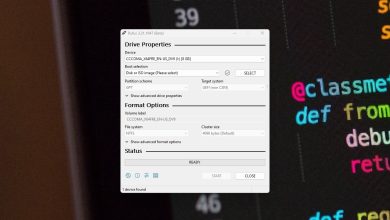The new final version Rufus 3.20 has been released. It is a small and free program, you can use to easily create a bootable USB Pen Drive. With this tiny program, you can make a bootable install medium, needed to clean-install your new Windows 10 or Windows 11.
ADVERTISEMENT
Rufus can be especially helpful when:
- You need to create a USB installation media with bootable ISOs (Windows, Linux, etc.)
- You need to work on a system that does not have an installed OS
- You need flash BIOS or other firmware from DOS
- You want to run low-level utilities
Changelog
- Enable applicable Windows User Experience options for Windows 10
- Remember last Windows User Experience selection between sessions
- Add automatic local account creation and regional options duplication
(NB: This is limited to creating an account with the same name as the current user and with an empty password that the user will be prompted to change after first reboot) - Add a workaround for ISOs that have a
syslinuxsymbolic link to/isolinux/(Knoppix) - Revert to offline insertion of registry keys for the TPM/SB/RAM bypass where possible
- Remove storage bypass, since this is a bogus bypass that doesn’t do anything
- Improve BIOS compatibility when displaying the “UEFI boot only” alert message
- Fix Windows User Experience dialog appearing twice for Windows To Go
- Fix Windows User Experience options not being applied for ARM64
- Fix Microsoft Account bypass not being applied unless TPM/SB/RAM bypass is selected
- Fix overeager detection of GRUB2 bootloaders with nonstandard prefixes
You can download Rufus 3.20 from its website or GitHub repository.



